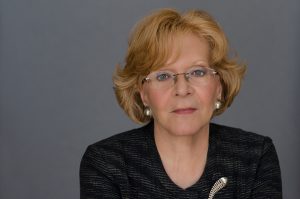Match this: More than $800,000 raised in 45 minutes and it didn’t involve a weapon of any kind.
Communicating, collaborating and co-operating are predominant themes in the nonprofit sector these days. If the fundraising results achieved in central Ohio this past March are any indication, those three concepts, combined with the concept of putting your money where your mouth is, are more than just warm and fuzzy themes.
The Columbus Foundation was feeling better than just warm and fuzzy on Match Day, March 6, when it utilized PowerPhilanthropy, its new online giving resource that builds on information as a basis for fundraising, to leverage $815,900.
PowerPhilanthropy, which was launch-ed in February, connects 400 nonprofits in central Ohio to each other, as well as to potential donors. Organizations wishing to be included in the mix provide basic information through the Nonprofit Toolkit on the foundation’s Web site, thus offering instant transparency to donors, who are encouraged to make online donations through the links that are readily visible.
As if all this is not enough, The Columbus Foundation is one of half-a-dozen organizations nationwide that are negotiating with GuideStar to utilize the information-fundraising concept known as DonorEdge, an online fundraising tool.
According to Lisa Courtice, vice president for research and grants management of The Columbus Foundation, Match Day was a fundraising-by-matching-contribution initiative for the organizations included in its PowerPhilanthropy coalition. The fundraiser lasted as long as the foundation’s $25,000 in matching funds lasted.
“We started at three o’clock, and if anyone in our coalition gave a dollar we matched it, and if anyone in the public gave we matched 50 cents for every dollar,” Courtice said. “If you were a nonprofit and in PowerPhilanthropy then you were eligible to participate in the match.”
Courtice said the initiative was publicized through an email campaign and a video and that the individual organizations sent their own electronic communication to their constituencies. “We think 300,000 (communications) went out,” Courtice said. “We gave them three weeks to prepare. We exhausted all the funds in 44 minutes.”
An information sheet distributed by The Columbus Foundation for Match Day shows that it received 7,400 unique visitors, 1,306 total contributions and 800 new users registered in one day.
In all, 246 organizations received contributions, and of those, seven received more than $10,000 in contributions and six others received more than $5,000.
“We were afraid that some of the bigger, more sophisticated ones would dominate (the fundraising), but everybody big, little, medium-sized – got a piece of the pie,” Courtice said. Courtice foresees continued growth of the coalition “family,” to 700 nonprofits, and said that Match Day was a continuation of a fundraising method that has worked well for her organization.
“In our work with community foundations we’ve found we were most successful when The Columbus Foundation puts up matching dollars,” she said. “It really helps leverage a lot of money. There’s something to be said for these matching dollars.”
Part of that effort involves encouraging people to make donations as soon as they make an online visit. The information and the technology mesh to help bring that about.
In terms of getting together with GuideStar, Courtice said there are big potential benefits in combining local data-gathering capability with a national heavy hitter.
“We needed a good technology provider, and with GuideStar, well, that’s their business,” Courtice said. “Their mission nationwide is to keep philanthropy more informed, and that’s our local goal. The more community foundations they can get to adopt this new model, the better their data is going to be nationwide. Someone will still have to enter the data, but they’re going to be a great technology partner.”
The idea, Courtice said, is that nonprofits can benefit more from donors who can conduct their own research about them than from those who rely on word-of-mouth recommendation. “We believe that informed philanthropy is more effective philanthropy,” Courtice added.
That approach is what GuideStar uses in forming partnerships with community coalitions, said GuideStar CEO Bob Ottenhoff. And, “informed” applies not only to donors but also to the nonprofits.
He explained that GuideStar collects information, manages it in a database and then presents it based on inquires, Ottenhoff said. “They (local organizations) are then going to take that information and use it as a tool to help people make decisions, make the right donations, and those organizations can also use this information in order to be more efficient,” Ottenhoff said.
Efficiency is another keyword in the sector. “Donors are saying things like ‘I want to donate to the organizations that are doing the best’ or, ‘I’m rewarding the efficient organizations’ or, ‘I can’t make up my mind among these three organizations, and you can help me out,'” Ottenhoff said. “It’s not about penalizing nonprofits or saying ‘Gotcha!’ It’s about (donors) saying they want to identify the nonprofits doing the best jobs, so we want to make sure we hook up donors so the most work gets accomplished,” he said.
Community foundations “like Kansas City or Columbus, two of the biggest in the group, have hundreds of donor- advised funds that they’re managing. They become the nexus for philanthropy in their communities,” he explained.
The Kansas City organization to which Ottenhoff referred is the Greater Kansas City Community Foundation, which six years ago initiated and developed the system that would become known as DonorEdge.
“We certainly always used GuideStar, but at that point (six years ago) GuideStar primarily had Form 990 information, and we weren’t sure how it had been vetted,” said Laura McKnight, CEO of the Greater Kansas City Community Foundation. She said the aim was to build a comprehensive tool for learning about and measuring nonprofit effectiveness.
“What we built was DonorEdge, and that is a community process that is backed by an online tool,” she said. “We gather really good information from all the nonprofit organizations in our area, not just government statistics but also program effectiveness, diversity, etc., and we validate the information. For example, we have a person on staff to reconcile 990s with information we have to keep it up to date.”
In addition to posting information, the Greater Kansas City Community Foundation offers guidance to donors about how to search DonorEdge to best understand the material they are reading or to find local nonprofits providing the services that are important to them.
Other organizations in the DonorEdge-GuideStar alliance are the Community Foundation of Central Florida, The Community Foundation of Middle Tennessee, the Greater Houston Community Foundation and The Foundation for Enhancing Communities, in Harrisburg, Pa. “About a year ago we started talking intensively with GuideStar because GuideStar wanted to provide good information on effectiveness but also wanted to get up-to-date information,” McKnight said. “So, the community can serve as the collecting arm for data and therefore be helpful to donors.”
McKnight said that her organization had undergone a long learning process in terms of gathering and utilizing the information that is collected.
“At the beginning we focused a lot on nonprofit capacity, that is, the right financial information and right governance to be effective,” she said. That emphasis changed over time, as the focus made the big shift from capacity to effectiveness.
There were also the traditional startup wrinkles that needed to be ironed out.
“When we started we underestimated the amount of effort and time it would take to build a profile template that both nonprofits and donors would understand,” McKnight said. “There was the issue of language because the point is to help donors make good investments, and in talking to nonprofits and donors we found a lot of disconnect. We needed a format that a nonprofit could do easily and that donors could understand. That’s the learning that we were able to share.”
That shared learning will provide the basis for what will be happening in the future. McKnight said that the national expansion of local outreach “could be a major leap forward in the quality and quantity and currency of verifiable information,” one that can be available to on a wide scale.
“We would like for anyone to be able to go to GuideStar and get up-to-date information,” McKnight continued. “It’s not unreasonable to think that any community foundation could link up to its software, because every donor in every community is asking these questions.” NPT











